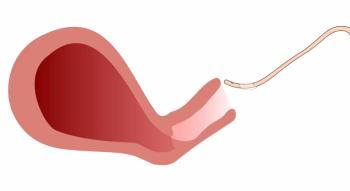
Lopa Pandya, MD, discusses link between hysterectomy and urinary incontinence
New research highlights an increased risk of urinary incontinence following hysterectomy, underscoring the need for long-term management strategies.
According to Lopa Pandya, MD, MS, FACOG, a urogynecologist and reconstructive surgeon at UI Health and medical adviser at Aeroflow Urology, recent research indicates a complex relationship between hysterectomy and urinary incontinence, with outcomes varying by type and time since surgery.
Hysterectomy, the second most common surgical procedure among women in the United States, is performed more than 600,000 times annually and can be conducted through various approaches, including vaginal, open, laparoscopic, or robotic. Urinary incontinence encompasses several types, including stress incontinence, overactive bladder, and mixed incontinence, which combines features of both.
Pandya referenced a recent study examining the long-term risk of pelvic floor disorders following hysterectomy. Findings showed that within 10 years of the procedure, rates of stress and mixed incontinence tend to increase. For an overactive bladder, risk also rises within the first decade. However, data beyond 10 years do not consistently show a continued elevation in risk. Importantly, there is limited research comparing urinary incontinence outcomes across different surgical approaches, making it difficult to determine whether certain hysterectomy types pose higher risks than others.
Pandya emphasized the importance of preoperative counseling and managing patient expectations. Since women undergo hysterectomy for varied reasons, such as fibroids, abnormal bleeding, prolapse, or preexisting incontinence, individual risk factors differ widely. Therefore, providers should clearly communicate that urinary incontinence is a possible long-term adverse effect, even if the exact likelihood varies.
Regarding prevention and management, Pandya noted that while strong evidence is lacking that pelvic floor exercises can prevent posthysterectomy incontinence, such exercises—especially Kegels or physical therapy-guided pelvic floor training—are low-risk and can improve muscle strength and bladder control. For patients requiring incontinence products, physicians typically must document the diagnosis, note the number of pads or briefs used, and coordinate with support teams to obtain insurance coverage.
Finally, Pandya explained that the exact mechanism behind incontinence after hysterectomy remains uncertain but likely involves structural changes to the pelvic anatomy and nerve disruption during surgery. Understanding and addressing these potential outcomes through counseling, physical therapy, and supportive care remain key aspects of comprehensive postoperative management.
No relevant disclosures.
Newsletter
Get the latest clinical updates, case studies, and expert commentary in obstetric and gynecologic care. Sign up now to stay informed.















